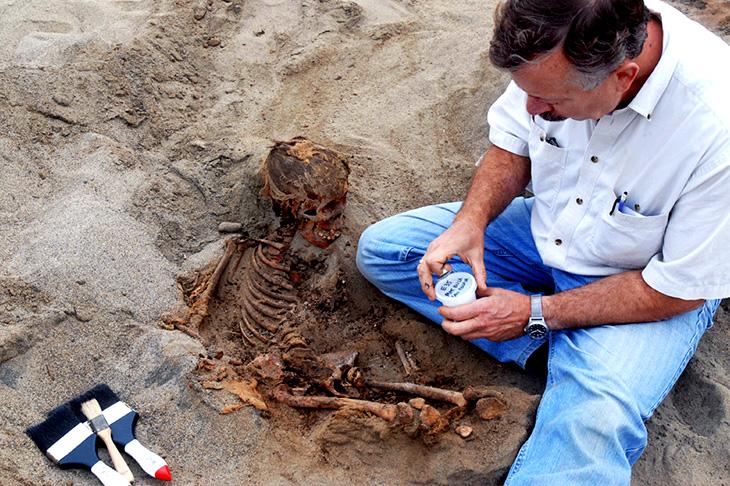Verano returns to burial site ‘before it’s gone forever’
John Verano cringed when he heard the news: Bulldozers were threatening to destroy the site in Peru where the Tulane University physical anthropologist, colleagues and students unearthed dozens of children and young llamas sacrificed and buried there nearly 700 years ago.
“We should think about asking for an emergency permit to dig some more of this before it’s gone forever,” he recalls telling his Peruvian colleague, archaeologist Gabriel Prieto.
So Prieto began wrangling a permit from the Peru Ministry of Culture, and Verano applied for — and received — an emergency grant from the National Geographic Society’s Committee on Research and Exploration to expand the dig at Huanchaquito, on Peru’s northern coast. In 2011 Prieto unearthed the remains of 42 children there who were sacrificed in a religious ceremony with 76 young llamas. Verano’s team joined Prieto in 2014 and found many more children and llamas.
“There’s no sacrifice like this anywhere, in the Andes or in the New World or the Old World.”
John Verano, physical anthropologist
The owners of the property are anxious to build homes there; so far, the Peruvian government has held them off, but Verano and Prieto are taking action.
“All the pieces are falling in place for us to do what I call a ‘surgical strike,’” Verano says. He plans to fly to Peru during spring break in March, so that he doesn’t miss teaching (one of his classes is Bioarchaeology of Mummies), and spend the week digging for more remains.
Joining Verano and Prieto will be a French zooarchaeologist (“a llama specialist,” Verano says) and a National Geographic writer and photographer.
Will they find more remains? “The odds are very small that we’ve gotten everything from this entire sacrifice in just this particular rectangle that we’ve laid down the last two years,” Verano says. “It’s a gamble, but I’m optimistic that we will be able to recover more material from the site before it is destroyed."
Early analysis of the materials indicates the children, both boys and girls, were probably part of the Chimú empire. The researchers think the sacrifices may have been an offering to the sea, but Verano has found no written evidence — “no ethnohistoric accounts, no colonial period accounts, no eyewitness accounts to go by.”
It is a deep mystery that he hopes to unravel.

